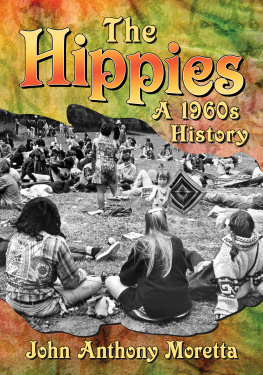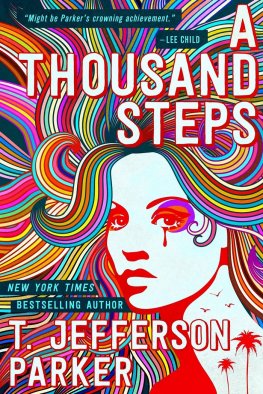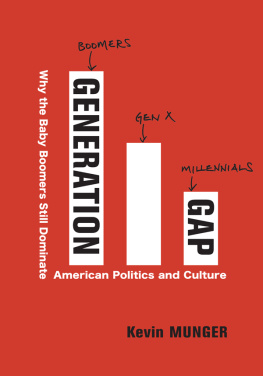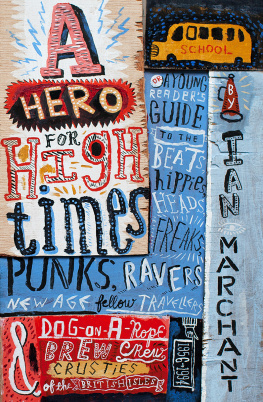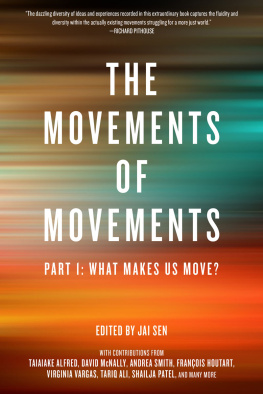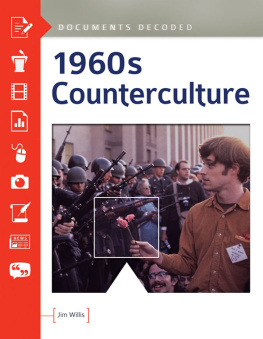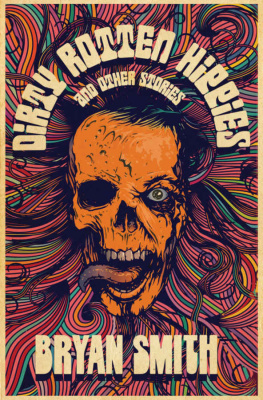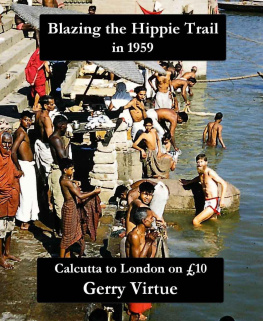
The Hippies
A 1960s History
JOHN ANTHONY MORETTA

McFarland & Company, Inc., Publishers
Jefferson, North Carolina
e-ISBN: 978-1-4766-2739-7
LIBRARY OF CONGRESS CATALOGUING DATA ARE AVAILABLE
BRITISH LIBRARY CATALOGUING DATA ARE AVAILABLE
2017 John Anthony Moretta. All rights reserved
No part of this book may be reproduced or transmitted in any form or by any means, electronic or mechanical, including photocopying or recording, or by any information storage and retrieval system, without permission in writing from the publisher.
On the cover Hippies and others at a happening in Golden Gate Park in San Francisco, 1968 Documentary Revolution (Lopert Pictures Corporation/Photofest )
McFarland & Company, Inc., Publishers
Box 611, Jefferson, North Carolina 28640
www.mcfarlandpub.com
Acknowledgments
Rarely does one earn the distinction of having written a book without the key support of relatives, friends, colleagues, and mentors. Thus, it is a pleasure to thank the many people who helped and encouraged me with this endeavor. My first thank you, as always, goes to Ira Gruber, Harris Masterson, Jr., professor emeritus of history, Rice University, who, since my days as a graduate student at Rice, has been one of my strongest supporters in all of my scholarly efforts. Ira is one of the most selfless, compassionate, genuine, and thoughtful human beings I have ever known and it is an honor to call him both mentor and friend. Ira continues to inspire me, for he is a great model for what it means to be totally dedicated to the life of the mind.
Within my home department of the Houston Community College System, I received the kind support that represents the best of my fellow historians and colleagues. I am especially grateful to Mike Botson, who in his own right is a first-rate historian and who took the time out from his own work to read not only the manuscript but offer insights and criticisms that forced me to go beyond where I was in my own thinking about the hippies and the books overall intent. I would also like to thank our department chair, Bennie Ables, who is unequivocal in her support of our scholarly undertakings, doing all she can to sustain and promote our efforts to show the larger community that the HCC history department values the academic and intellectual pursuits and accomplishments of its faculty.
Along with several other HCC colleagues, I ventured to the Gulf state of Qatar in 2010 on behalf of HCC to help open the regions first community college. While in Qatar I came to know HCC folk that I had previously never met and two of them, Ms. Dana Fields and Ms. Helen McMillan, became not only colleagues and close friends but key individuals in the final delivery of this book. Both provided invaluable assistance in helping me to arrange the chapters, notes, and bibliography, along with meticulous proofreading and formatting. I thank them both most profusely. Another HCC/CCQ colleague who generously gave her time proofreading every page, offering stylistic suggestions along the way, was professor of political science and government Barbara Loggins. Barbara also helped me to "remember" aspects of hippiedom that I had forgotten! Finally, I would like to thank all the individualsfriends, colleagues, and relativeswho graciously discussed with me where they were, who they were, and what they were doing during the 1960s. Their stories, memories, and interpretations then and now of the events and people of that era proved invaluable in helping to shape the historical contours and landscape of this book.
Aesthetically, this book would not have been possible without the photographs that will give readers a wonderful pictorial image of the 1960s and the hippie movement. It is thus with the greatest appreciation and affection that I thank our two oldest daughters, Michelle and Christina Moretta, both of who took time out from their own busy work schedules to scour the photograph archives at the San Francisco Public Library and the Bancroft Library on the campus of the University of California, Berkeley, to find the never-before-seen photos from the period found throughout this book. From the SFPL collection, especially noteworthy were those taken by Dennis Maness, as he captured on camera hippiedoms early years as it was evolving in the Haight-Ashbury neighborhood in San Francisco, climaxing with the hippies first major coming-out party, the January 1967 Human Be-In, celebrated in the citys famed Golden Gate Park. Thank you Dennis for your permission to use your photos in this book. I would also like to thank Ms. Crystal Miles of the Bancroft Library who was most gracious in helping Michelle and me to locate those photo collections at the Bancroft germane to the hippies and the 1960s in general. Some of the most exemplary were taken by Larry Keenan, who sadly passed away a few years ago. However, thanks to the kindness and generosity of his daughter Chelsea and his wife, Lisa, Larrys iconic photos can be seen in this book as they are indispensable to the telling of the hippie story and the 1960s.
Of all the encouragement I received to complete this undertaking, no one was more reassuring and confident in my ability to do so than my wife, Chris. From her understanding of this projects importance to her reading of every paragraph, she was always there, never hesitating to help in whatever way she could. She was my sharpest critic, most determined advocate, muse, best editor, closest friend and confidante. No written tribute could ever express my deep appreciation for the faith, patience, and love she has demonstrated throughout our forty years of marriage.
Introduction: The World of the Hippies
Riding the train from Casablanca to Marrakech, Morocco, in February 2014, the lyrics of Marrakech Express repeated through my head, on the way to the North African city that had been a favorite hippie destination in the late 1960s and early 1970s. Itstill is. By the late 1960s, with the explosion of psychedelic drugs and a desire to be immersed in nature, a renaissance in exotic travel and the quest for the mystical and the authentic emerged among the nations latest bohemians, the hippies. It was the same passion for boundless travel and real life experiences that drove the 1950s Beats to many of the same locations. Marrakech became a compulsory stop for seekers on the original hippie trail to India, which for many, was the ultimate destination. It was there, they believed, as the Beatles had in their sojourn to India in 1968, that nirvana could be found, along with some of the best hashish in the world. The search for dope defined the hippie trail as the often treacherous roads, through scorching deserts and high mountain passes led to the major hash-producing centers of the worldAfghanistan, Chitral, Kashmir, and Nepal. These were familiar names to hippies, who knew very little else about those countries and their inhabitants, other than that they cultivated some of the finest-grade, highest quality weed on the planet. At that time, Marrakechs allure was not only the ready availability of one of the countercultures favorite hallucinogenic drugs, hashish, but bountiful amounts of kef, which smoked in a shisha or hookah pipe, gave an even more intense high than marijuana or hashish. Both were in plentiful and in cheap supply in Marrakech and locals were more than happy to sell the opiate.
During the late 1960s and early 1970s the underground hashish trade was a lucrative business for many Moroccans, including the police, who turned a blind eye to this most profitable enterprise in which American hippies invested heavily. Adding to the citys hippie mystique were visits by some of the eras most notable rock and roll celebrities, such as Jimi Hendrix and the Rolling Stones, with the former said to have spent a few days in the picturesque Atlantic-seacoast city of Essaouira, about two hours from Marrakech. In both cities, hippies could be seennot originals of course. Even more fascinating were the signs of residual hippiness in the form of many younger Europeans in their twenties and early to mid-thirties decked-out head to toe in stereotypical hippie attire and look; caricatures of the originals. It was as if they had sprung from an old
Next page
